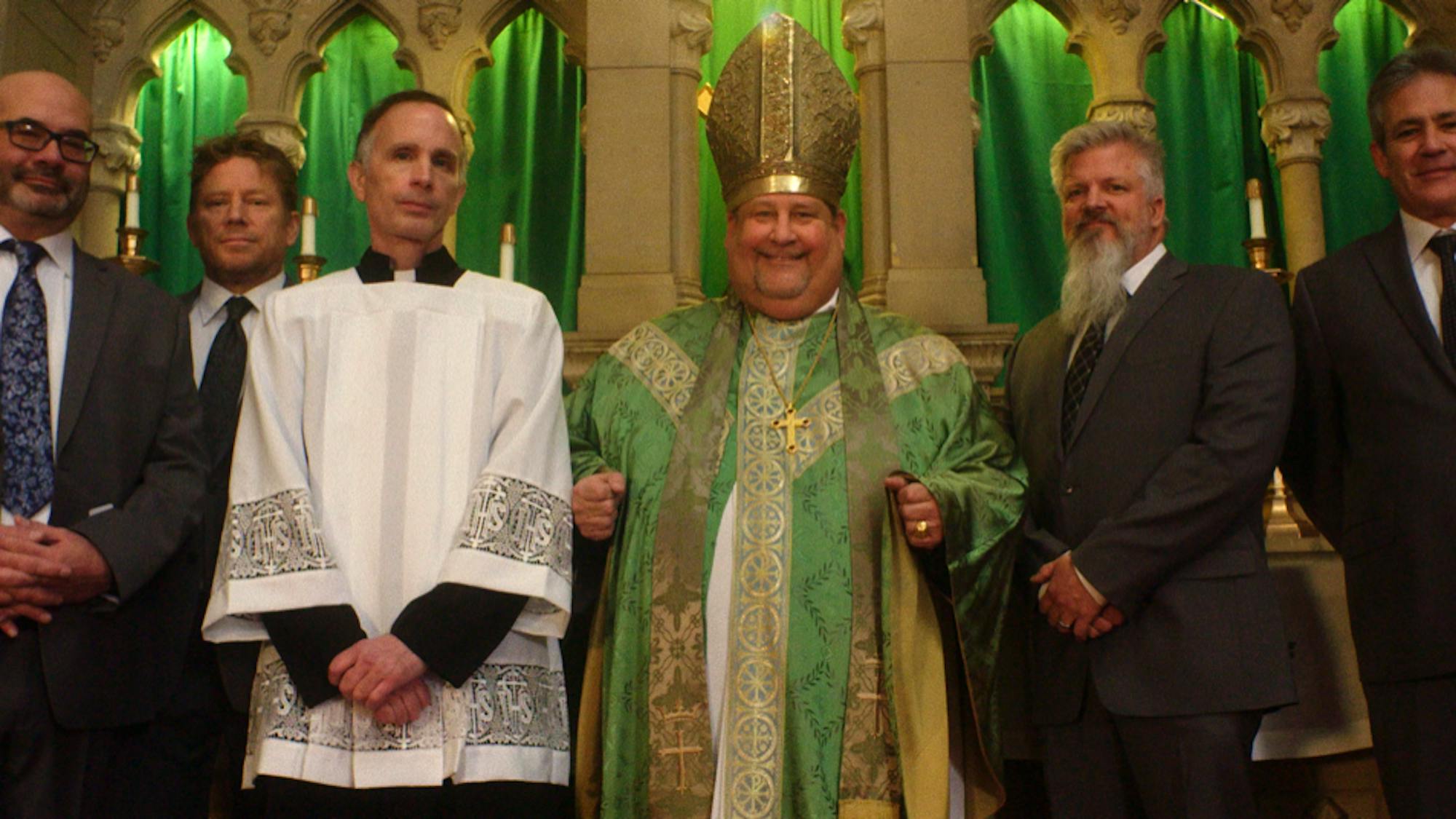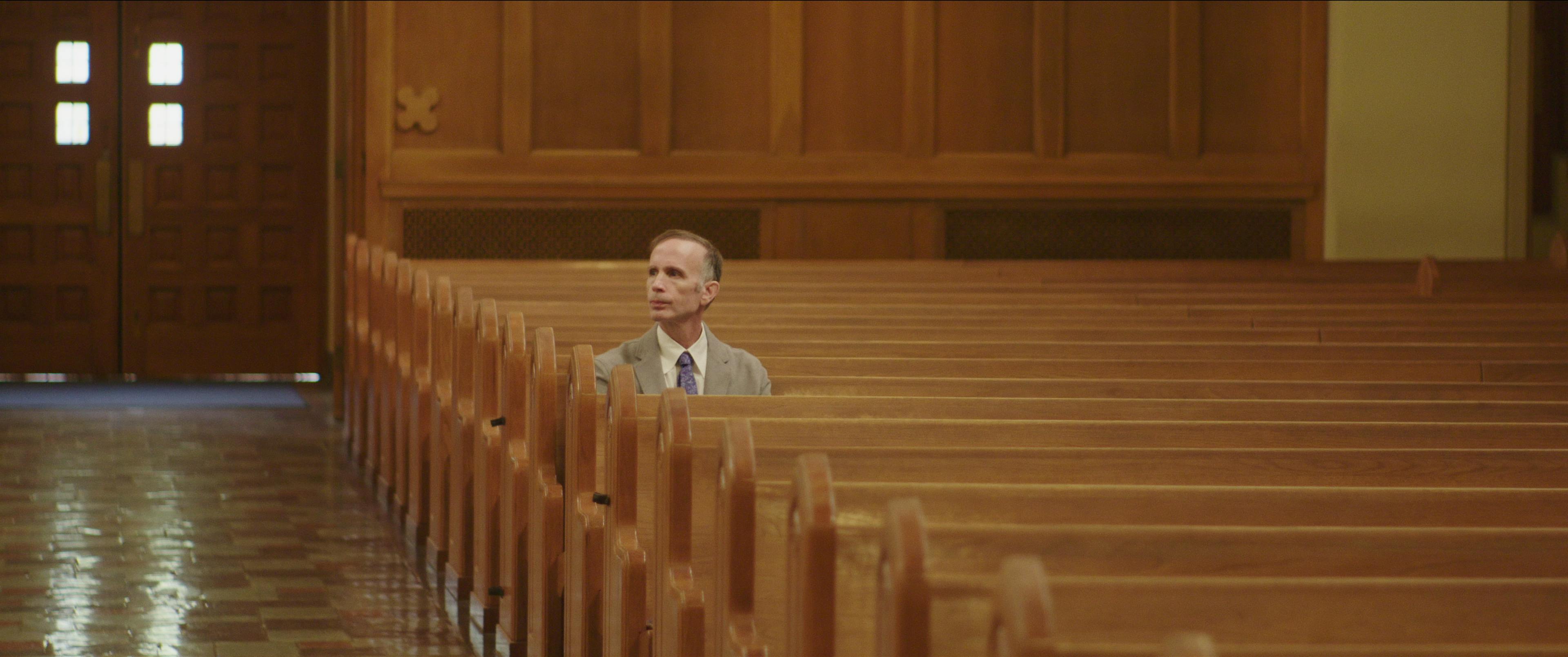Creates a safe haven for processing trauma through theater with director Robert Greene.
In 2018, director Robert Greene was in San Francisco doing a Q&A for his film Bisbee ’17, discussing the role of art in processing trauma, when his sister-in-law gave him The Body Keeps the Score by Bessel van der Kolk. Upon reading the book, he began to see trauma as “a physical thing that can be understood and eased, in part, by theater and acting.”
That same year, Greene watched a video of lawyer Rebecca Randles and her clients — survivors of sexual abuse at the hands of Catholic priests. And so the film Procession was born, a collaboration between six men, their lawyer, a drama therapist, and their community, who fostered a space for healing. We follow the men as they revisit their pasts and support one another through the process of writing and directing their own scenes.
Below is an excerpt from a Procession Q&A with Greene, Ed Gavagan, Susan Bedusa, Bennett Elliott, and Robert Kolodny at the Paris Theater, moderated by Eric Hynes. At one point in the talk — which leads the panelists and audience to tears and laughter and back again — he posits, “What is the point of documentary? What's the point of making a movie?”

Joe Eldred, Ed Gavagan, Michael Sandridge, Tom Viviano, Dan Laurine, and Mike Foreman
Eric Hynes: This film is a demonstration of the sharing of process — your process as a filmmaker, the men’s process as they work through what they’re working through, and the complications of doing this together.
Robert Greene, director: The trust that we were able to build comes on the back of Rebecca Randles and therapist Sasha Black building trust for many years. Rebecca ended up casting the film with people that she felt could get something out of it and could handle it.
Ed, how did you get involved? It’s revealed early on that you didn’t know the other men before that first day of shooting.
Ed Gavagan, survivor: I was not keen to do it. There was still a lot of shame and thinking I was to blame for what happened. Now I feel like you guys have taken all that shame and thrown it off my shoulders.
Robert just nailed it every time we came to him with a problem. I said, “I don’t think I can be in this. It’s just going to be too much.” Robert responded, “You don’t have to. If you decide you want to pull out, that’s your decision.” To have that permission — it’s unbelievable. I’m so grateful.
Greene: Rebecca had done this amazing thing where she brought the guys together for a group lawsuit. We didn’t know that they had not met, but it really shows how sometimes, in trying to get justice, it can isolate survivors. They can’t talk to each other, which is practical because they can’t match details. It underscores the shame you’re feeling when, at every step of the process, you’re isolated. What Ed said the first day was, “I’ve never been in the room with this many survivors.” That actually gave us the power to say, “If we just do this, and then move on, we’ve done something good.”
“Documentary” does apply a lot of the time. But something like this, where it clearly involves collaboration and buy-in from everybody — what did it mean to be doing it for each other?
Gavagan: It was a shocking revelation to me to talk to these guys and to find these common threads in our life: relationship problems, problems with authority figures, very different spiritual lives. We were so careful with each other. I’m very grateful for them, and for being brought together. I think I helped each of those guys equally the way they helped me.
On the production end you're creating six movies within a movie. Can you talk a little bit about how that evolved?
Susan Bedusa, producer: Having essentially seven directors involved was interesting. We had to be prepared for everything — all the emotions that are happening at the same time as the scripted parts. We took extra care with every single thing we did.
Bennett Elliott, producer: Something that was so important to the producers was setting a stable foundation. You can't really field any kind of curve balls that come up if you don't know when you’re going to hit a trip wire of someone’s trauma and you’re going to have to pivot.
For guys who’ve been told they cannot talk to each other, to keep the shame buried in the bottom of the ocean, coming together this way is the opposite of that.
Robert Greene
Rob Kolodny — incredible job. You were shooting these highly-stylized dramatic sequences and documentary observational footage at the exact same time.
Robert Kolodny, director of photography: We were lucky that we began by having great conversations six months in advance of cameras rolling. We had a really solid game plan that, as soon as we started shooting, we kind of abandoned. But it was the foundation that was there if we needed it.
The visual style of the film came from each of our collaborators — ideas blossomed and they came to us with these beautiful storyboards. The verité scenes became more intimate as we became closer. The camera very quickly became handheld. I would also call out people like Dave Williamson, who is our gaffer on film, and Dan Laurine, both a survivor and our location scout — who weren’t just day players coming onto a film to work a job, but were willing to be emotionally invested, listen to the stories being told, and really be there.
It’s an emotional film and a privilege to be let in to witness. Can you talk about your relationship with the camera?
Gavagan: When I saw the bell ringing scene, I didn’t remember that there was a camera there; it was just Robert watching me ring the bell. But as I’m watching myself ring the bell, I’m like, how did he film that? The camera had to have been two feet away from me.
Kolodny: I think it really comes from the practice of building a circle of trust and the camera not being this foreign object. The camera’s always with me, and I was always with you, so it became very familiar.
Can you talk a little bit about some of the editing challenges.
Greene: Every time you put the camera on them, they’re amazing, and everything they say is interesting. I hate to say this because of how painful the whole experience was, but COVID gave us the space to really live there. Every single time you hear a detail it’s like an explosion. As you’re working, you have to create a blast zone around each of these details.
The biggest thing for me is that I am in therapy after making this film. These guys are leaders — they’re conjuring an ability for you and me to start to work through our own stuff and to be stronger.
Gavagan: All of us guys want to make sure that the viewers understand how concerned we were for Terrick, who played the boy in all of our scenes.
Greene: Having one kid represent all of us was Dan Laurine’s idea. The movie’s magical because you do get these spontaneous moments of creativity, which are just so fun to watch. We know art can be therapy, but this was a chance to do it together, as a family. For guys who’ve been told they cannot talk to each other, to keep the shame buried in the bottom of the ocean, coming together this way is the opposite of that.
